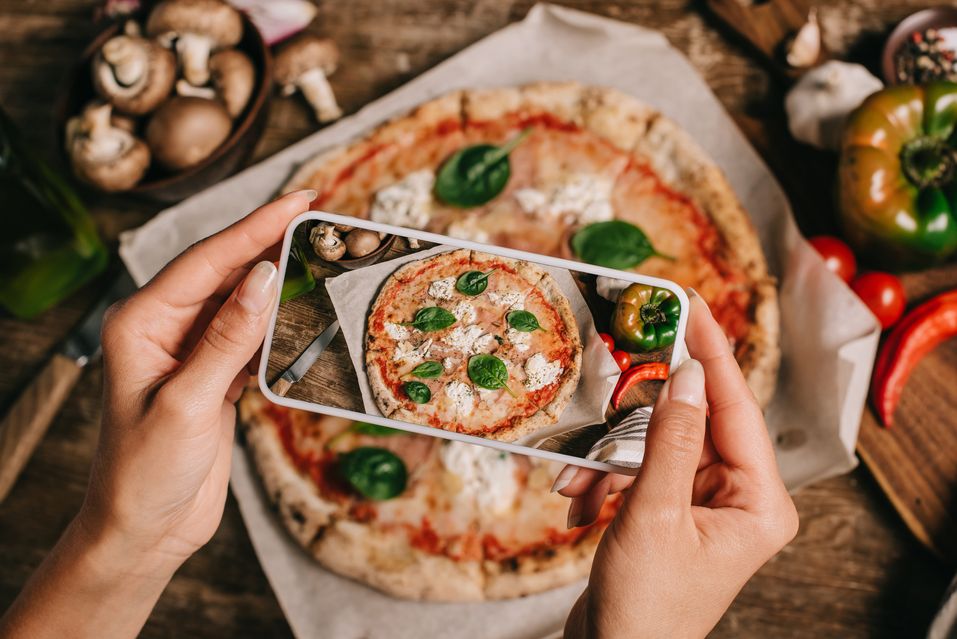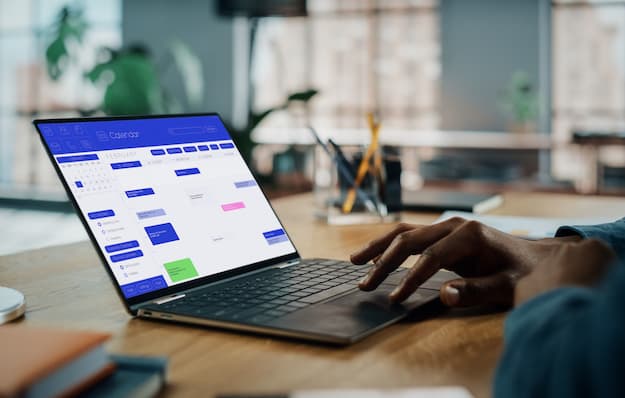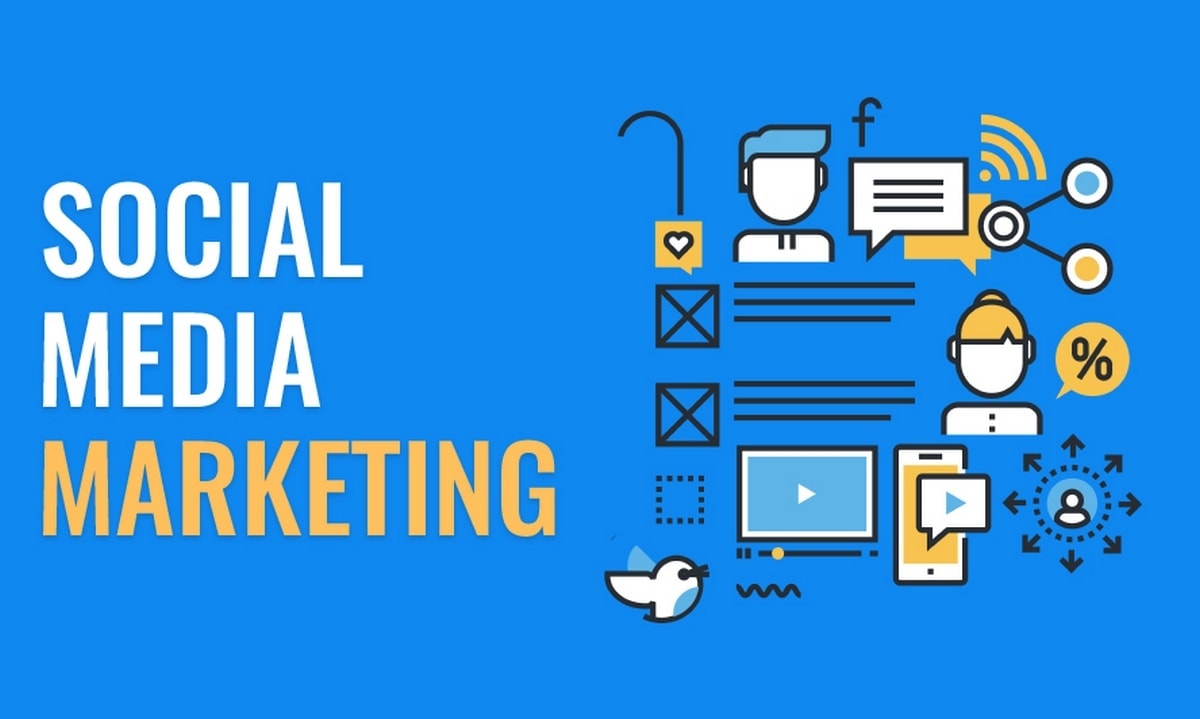
Food And Beverage Marketing: 7 Hottest Digital Trends
Food And Beverage Marketing: 7 Digital Strategies To Gain More Customers
In 2020, the food and beverage industry was expected to generate $76.5 billion in revenue, and by 2024, it is expected to reach a market volume of $105.7 billion.
This market’s growth rate and volume of consumption will make it more competitive than ever.
If you run a food and beverage company, you’ll need to tap into some highly efficient ways of reaching out to prospects and converting them.
In this article, we will look into some of the most effective digital trends that will help you take your food and beverage marketing tactics to the next level, to attract more customers and ultimately increase revenue.
Top 7 Food And Beverage Marketing Tactics To Attract More Customers For Your Brand
Of the many ways to attract new customers, the following nine will prove to be the most efficient this year – and we have research to prove it.
1. Social Media Loves Food & Beverage Brands. Leverage Their Enthusiasm.
Social media is one of the most lucrative channels for the food and beverage sector, because:
- Food and drink businesses are the most mentioned brands on Twitter – with a 32% share of tweets.
- Brand posts on social media are meal inspiration sources for 19% of users.
- 6 out of the 10 most popular brands on Facebook are in the food and beverage industry.
Instagram, Twitter and Facebook users love food & beverage brands, making these some of the most effective channels to leverage in your digital strategy, in terms of cost and results.
So how can your brand incorporate social media into your digital strategy?
- Place your product in popular contexts: From reinventing popular recipes to emphasizing the health and environmental benefits of your production process, create posts and campaigns incorporating your product into relevant discussions among your target audiences.
- Encourage user-generated content: Encourage your followers to share their experiences with your food & beverage products via photos, video reviews and more. This encourages a constant stream of content from customers, builds the brand relationship and makes it much more interesting for potential new consumers.
- Take advantage of the evolving social ads: Use sophisticated targeting algorithms and innovative formats to optimize spending and attract highly qualified leads into your sales funnel.
- Form partnerships: Consider forming strategic partnerships with brands that complement yours and the influencers that fit your brand image. Collaborative social media campaigns can educate your audience on the versatility of your products, as well as grow your follower base.
2. 79% Of Consumers Trust Food Blogs. Channel That Trust To Your Brand.
Food bloggers command one of the highest degrees of trust online.
Their educational and/or entertaining content provides great opportunity for food and beverage businesses to increase brand awareness and retention, as well as gain new customers.
- 79% of users trust blogs for information about food.
- Food bloggers have four times as many followers as any industry.
- 81% of customers (and 89% of millennials) want to know more about how the food is prepared and to see “behind the scenes footage.”
Partner with food bloggers to:
- Introduce your product to new audiences and gain a larger following
- Educate audiences on the use and versatility of your products
- Increase trust in the quality of your product
Extra tip: 2021 will continue to see the growth of the organic, vegan and sustainable food & beverage trends. Brands that uphold these values are well-positioned to benefit from the increase in environmental and health awareness.
To make the most out of it, create content around:
- Organic / vegan / allergen-free products
- Environmental and social benefits of your production process
- Environmentally and socially responsible values and motives
Looking to grow your brand online?LET US GIVE YOU IDEAS!
3. 86% Of Millennials Turn To YouTube For Food & Beverage-Related Tips. Serve Them Your Products Via Vlogs, Tutorials Or Ads.
YouTube enjoys a great following among food & beverage customers. Whether they are seeking culinary tutorials or reaction-video entertainment, this audience is highly engaged – an ideal opportunity to gain more eyes and dollars for your brand.
- Almost half of all adults watch food videos on YouTube.
- Interest in cooking skill videos skyrocketed 110% in 2018.
- 86% of millennials turn to YouTube for guidance on topics like preparing meals.
- Millennial food lovers are a loyal audience—one that’s powered a 280% growth in food channel subscriptions year over year.
- Food content has generated nearly 41 billion views on YouTube.
You can incorporate video, or more specifically, YouTube food and beverage marketing into your digital strategy via:
- Owned channels to distribute culinary tips and campaigns
- YouTube partnerships for endorsements and follower base growth
- Ads for greater brand awareness among target demographics
Video can help your food & beverage marketing efforts:
- Introduce your product to new audiences and gain a larger following
- Educate the audiences on the use of your products, production process and/or brand values
- Reinforce your brand identity through behind-the-scenes, endorsements and/or storytelling
4. 91% Of Customers Read Reviews. Consider Reputation Management As One Of The Pillars Of Your Digital Strategy.
Your food and beverage marketing tactics should encourage customers to leave reviews, which you should monitor closely for higher customer satisfaction. Why? A 2020 Local Consumer Review Survey found that:
- 91% of users say that positive reviews make them more likely to buy the product.
- Generally, online reviews are the second most trusted source of information for users.
- As much as 97% of review readers also read the account owner’s replies to reviews.
- 76% of users trust online reviews as much as a recommendation from their friends and family.
[Source: productreview.com.au]
Some general tips on how to set up a profitable online review system for your business include:
- Use poor reviews to your advantage: Getting a negative review of a product can be reversed by responding directly to the reviewer, in a unique and polite manner, by asking questions, validating their feelings and focusing on solving the problem. Disappointed customers will, through good customer service, very often reverse their opinion and update their review if you ask them.
- Encourage positive reviews on targeted platforms or owned channels: Encourage your users to review your products or their experience with your customer service in exchange for perks. This will help grow your brand awareness and trust.
- Monitor all the right platforms: Your users are sharing their experiences on social media pages, Yelp, Tripadvisor and similar platforms. Identify and monitor these platforms as part of your brand reputation management strategy.
5. 64% Of Consumers Use Google My Business To Find Business Info. Optimize Your Profile To Drive More Traffic To Your Physical And Online Stores.
Google My Business (GMB) is an overlooked business directory that is ideal for companies in this niche and one of the hottest digital trends in the food and beverage industry.
According to a Google My Business Insights Study conducted by BrightLocal:
- 64% of consumers have used Google My Business to find the address or phone number of a local business.
- 56% of action of Google My Business listings are website visits.
- Each month, an average business gets 59 actions from Google My Business listing.
Registering your food & beverage business, be it a wine and cheese shop, artisanal ice cream stands or brand headquarters, establishes credibility with your customers researching online and allows you to attract the near-me searchers and organic online store traffic.
Google My Business:
- Improves business visibility through local SEO
- Lets you connect with new audiences
- Helps you understand your customers’ behavior
[Source: NYC Wine Merchants Google My Business]
When a prospective customer searches for your business on Google, the GMB page will show your working hours, website, location and photos at the top of the search results.
These points help educate users about your business and help them find, contact, visit and visualize it.
Some of the best practices for optimizing your GMB page this year include:
- High quality photography: A recent study found there is a strong connection between the number of photos on GMB and the search performance; Businesses with more photos get more search and Maps views, and they appear in more direct and discovery searches. Photos can be posted either by your staff or by your customers.
- Use of GMB’s features: Go beyond the basic profile setup and focus on the additional features such as Review Management, Insights, Bookings, Posts, Q&A and so on. Creating an Offer Post (an Update, Event, Offer or Product) can engage audiences to share your news, offers and products.
- Advanced information: This may include a store code, labels, Google ads location and more, which can help new customers find your business more easily.
6. 92% Of People Trust Peer Recommendations. Encourage Customer Advocacy To Increase Sales & Retention.
Word-of-mouth has been one of the most powerful marketing channels since the infancy of trade and it its power translates to the digital environment unscathed.
- An overwhelming 92% of people trust recommendations from people they know.
- Customers who are referred to by other customers have a 37% higher retention rate.
- Revenue increases twofold with a 12% rise in advocacy.
- 67% of marketers say that advocate marketing campaigns helped them engage with their target audiences.
Food and drink products are something your customers are passionate about. Encourage the sharing of this passion to stimulate brand advocacy and reap its benefits.
Looking to grow your brand online?LET US GIVE YOU IDEAS!
To incorporate consumer advocacy in your food and beverage marketing businesses:
- Find the perfect consumer advocate for your brand: Target social media civilians (i.e. non-influencers) who are active and passionate about your brand. Reward their passion with attention, freebies and other online or offline perks.
- Build an advocacy marketing program that attracts high-profile advocates: Create exciting content, using storytelling, value-driven campaigns and/or interactive campaigns such as contests with exclusive prizing to gain the attention and engagement of influencers.
- Identify the places to recruit these advocates: Look to your customer base and your competition to identify the right candidates for your food and beverage marketing advocacy strategy.
7. Almost Half Of The Small Businesses In The US Do Not Have A Website. Capitalize On This Opportunity Whether Your Are Selling Online Or Not.
Food & beverage brands stand to gain a lot from eCommerce:
- eCommerce sales will account for 20% of retail sales globally in 2022.
- About 50% of small businesses in the US do not have a website.
- Users have cited 24/7 availability as their number one reason for shopping online.
- 48% of online shoppers utilize large eCommerce marketplaces.
- By 2025, online sales will make up 15-20% of overall sales in the food and beverage industry, which is ten times more compared to 2016.
- The US online grocery market grew from $12 billion in 2016 to $26 billion in 2018.
However, whether you are looking to sell online or not, digital presence can be a powerful tool to expand your market and support almost every stage of your sales funnel.
A simple website can help your food & beverage brand:
- Strengthen brand identity
- Educate your audience about your products
- Gain customer loyalty through user-generated content
- Run promotional campaigns to increase store traffic










